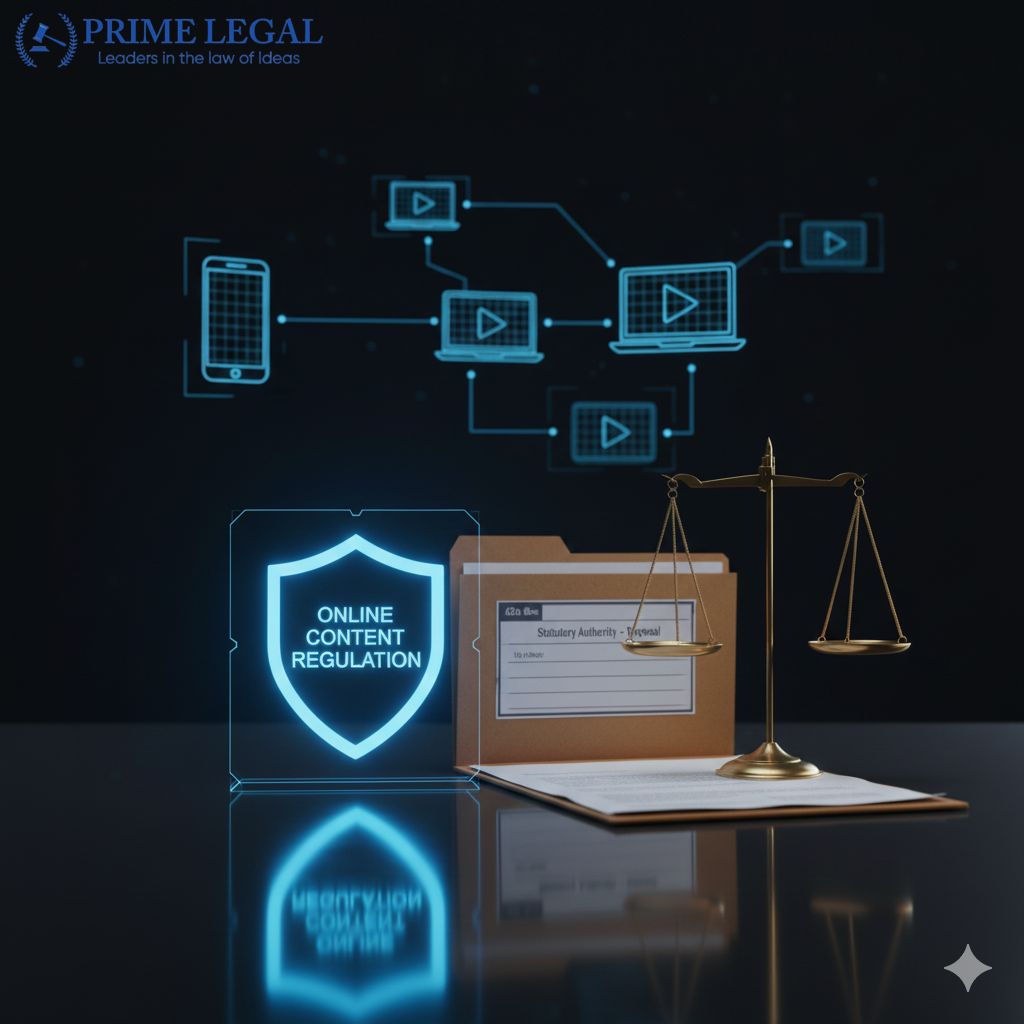INTRODUCTION
The Supreme Court on 27 November 2025 emphasized the need for strengthening digital accountability and to serve this purpose it is of utmost necessity to have a “neutral, independent and autonomous” body to regulate obscene, offensive or illegal content in online platforms. The Court clearly expressed its dissatisfaction with the efficacy of the existing “self-regulation” model being followed by media entities. The Court directed the Centre to draft guidelines within four weeks after public consultations.
BACKGROUND
A bench comprising Chief Justice of India Surya Kant and Justice Joymalya Bagchi was hearing the petitions filed by podcaster Ranveer Allahabadia and others challenging the FIRs related to the obscene content in the “India’s Got Latent” show. The bench was dealing with three cases i.e., petition filed by YouTuber Ranveer Allahabadia in Ranveer Gautam Allahabadia v. Union of India and ors., W.P.(Crl.) No. 83/2025, petition filed by YouTuber Ashish Chanchlani in Ashish Anil Chanchlani v. State of Guwahati and Anr., W.P.(Crl.) No. 85/2025 for clubbing of FIRs lodged against them in connection with India’s Got Latent controversy and one petition filed by M/s SMA Cure Foundation in M/s SMA Cure Foundation of India v. Union of India and ors., W.P.(C) No. 460/2025.
On 3 March 2025, the Supreme Court had expanded the scope of Ranveer Allahabadia case to deliberate upon the need for a mechanism to regulate vulgar content in YouTube and other online media. In the wake of the controversy over “India’s Got Latent” show, the Court had expressed strong disapproval of the nature of language used in the show and had asked the Union Government the need to have a regulatory measure.
KEY POINTS
- It was observed that in order to prevent the broadcasting or airing of the programmes, which are offensive to well-known moral standards of our society, some regulatory measures may be required. The Court had asked the learned Solicitor General of India, Tushar Mehta to deliberate upon and draft such regulatory proposal which may not encroach upon the Fundamental Right of free speech and expression but, at the same time, which is effective enough to ensure the reasonable restrictions within the meaning of Article 19(2) of the Constitution. The draft regulatory measures, in this regard, can then be brought in public domain to invite suggestions from all the stakeholders before taking any legislative or judicial measures in this regard.
- The Court also proposed stronger age-verification mechanisms, including Aadhaar-based gating, before explicit or sensitive content becomes viewable on digital platforms. Further the Court questioned the adequacy of current one-line disclaimers that viewers barely register before objectionable material starts playing. Chief Justice Surya Kant observed the need to build a responsible society and most of the problems will be solved.
- Further Attorney General R Venkataramani had presented a Ministry of Information and Broadcasting (MIB) Note suggesting changes to the Code of Ethics under the Information Technology Rules, 2021, incorporating separate guidelines on obscenity, accessibility for online curated content, and AI and Deepfakes. This note proposes classifying online curated content under four heads i.e., U rating for content suitable for all children, U/A rating for three categories (children below 7 years, children between 7-13 years, and children above 16 years), and A rating for strictly adult content. The Court observed that the guidelines should strike a balance protecting the freedom of speech and expression however preventing it from leading into perversity and obscenity.
- The Court reiterated the need for a preventive mechanism to ensure there is no misinformation, loss of lives or property and most importantly any kind of proposal should be put in the public domain for consultation first. Considering the present reality with regard to any obscene content is that by the time the takedown is ordered which happens after about 48 or 72 hours, the content would have become viral by then.
RECENT DEVELOPMENTS
The Supreme Court has stressed upon the need for an autonomous body which is free from influence of those who are part of this forum. The Centre has been directed to draft guidelines with regard to an effective” mechanism to regulate user-generated content and a stronger, independent oversight body within four weeks after public consultations. The guidelines made by the Centre will be applied on a trial basis. The Court reminded that the regulations being framed by the government is to have a preventive mechanism. The objective is not to throttle anyone but to have a sieve.
CONCLUSION
It could be concluded that the recent hearing of the instant case is a stern reminder of the fact that Freedom of speech is an invaluable right but it cannot lead to perversity. It also highlights the Court’s intervention in balancing the freedom of speech and expression of an individual with the dignity of the society as such. Freedom of speech and expression has to be protected and respected but the society and innocent children also have a fundamental right of dignity. Their right needs to be protected equally as well.
“PRIME LEGAL is a full-service law firm that has won a National Award and has more than 20 years of experience in an array of sectors and practice areas. Prime legal falls into the category of best law firm, best lawyer, best family lawyer, best divorce lawyer, best divorce law firm, best criminal lawyer, best criminal law firm, best consumer lawyer, best civil lawyer.”
WRITTEN BY : AMYUKTA RAJAGOPAL


